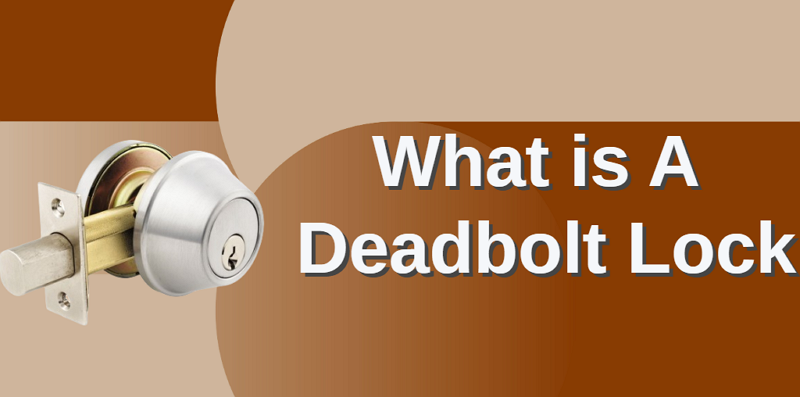What is a Deadbolt Lock and How Does It Work?
When it comes to securing our homes and properties, a deadbolt lock plays a crucial role in providing an added layer of protection. Unlike regular spring latch locks, deadbolts are more robust and reliable. In this article, we will explore what a deadbolt lock is and how it works to enhance security.
What is a Deadbolt Lock?
A deadbolt lock is a type of locking mechanism commonly used in doors to provide enhanced security. Unlike spring latch locks that can be easily manipulated, deadbolts require a key or thumb turn to engage or disengage the lock. This makes them significantly more resistant to forced entry, providing homeowners with peace of mind and a higher level of protection against intruders.
Types of Deadbolt Locks
Single Cylinder Deadbolt
The single cylinder deadbolt is the most common type of deadbolt lock. It operates with a key from the outside and a thumb turn from the inside. This allows for easy and quick locking and unlocking from the inside, especially during emergencies. However, it's essential to keep the key accessible but out of reach from potential intruders.
Double Cylinder Deadbolt
The double cylinder deadbolt offers additional security by requiring a key for both the exterior and interior side of the lock. This prevents intruders from accessing the lock through a nearby window and reaching the thumb turn. While it enhances security, it may also be a safety concern in case of emergencies, as a key will always be required to unlock the door from the inside.
Keyless Deadbolt
Keyless deadbolts use mechanical keypads, electronic keypads or smart technology, allowing access through a pin code, fingerprint, or smartphone app. These advanced deadbolts provide convenience, as you don't need to carry physical keys. They are suitable for homeowners who prefer a modern approach to security and easy access for family members or trusted individuals.
Components of a Deadbolt Lock
A deadbolt lock consists of several components that work together to provide security.
Exterior Cylinder
The exterior cylinder is the part of the deadbolt that houses the keyhole. When the correct key is inserted and turned, it aligns the pins inside the cylinder, allowing the bolt to move freely and unlock the door.
Interior Thumb Turn
The interior thumb turn is the knob-like component on the inside of the door. Turning the thumb turn rotates the bolt, locking or unlocking the door. This allows for quick and easy operation from the inside without needing a key.
Bolt
The bolt is the sliding metal piece that extends from the edge of the door into the door frame when the deadbolt is engaged. It provides a sturdy anchor point that keeps the door securely closed and prevents unauthorized entry.
How Does a Deadbolt Lock Work?
A deadbolt lock works on a simple yet effective principle of using a bolt to secure the door to its frame. When the key is inserted into the exterior cylinder and turned, the pins inside the cylinder align to the correct height, allowing the cylinder to rotate freely. The rotation of the cylinder, in turn, moves the bolt, extending it outwards to secure the door.
On the interior side, the thumb turn is connected to the bolt mechanism. When the thumb turn is rotated, it retracts the bolt, unlocking the door. This combination of an exterior key and an interior thumb turn ensures that the deadbolt is easy to use from both sides while providing robust security.
Advantages of Deadbolt Locks
Deadbolt locks offer several advantages that make them a popular choice for homeowners:
- Enhanced Security: Deadbolts are more resistant to forced entry, providing better protection against break-ins.
- Peace of Mind: Knowing that your home is secured with a deadbolt lock can help you feel safer and more at ease.
- Durable Construction: Deadbolts are typically made of robust materials, ensuring longevity and reliability.
- Variety of Options: There are various types of deadbolt locks, allowing you to choose one that suits your specific needs and preferences.
- Easy Installation: Many deadbolts are easy to install, either as a DIY project or with the help of a professional.
Factors to Consider When Choosing a Deadbolt Lock
When selecting a deadbolt lock for your home, consider the following factors:
- Security Level: Different types of deadbolts offer varying levels of security. Choose one that fits your security requirements.
- Quality and Material: Opt for deadbolts made from durable materials to ensure longevity and resistance to tampering.
- Fit and Size: Ensure the deadbolt fits your door properly and aligns with the door frame for effective locking.
- Additional Features: Some deadbolts come with extra features, such as keyless entry or smart integration. Consider these options if they align with your preferences.
Common Issues and Troubleshooting
Even with proper maintenance, deadbolt locks may encounter some issues over time. Here are common problems and troubleshooting tips:
Misaligned Deadbolt
If the deadbolt no longer aligns properly with the door frame, check for any loose screws or misalignment of the door. Adjust the strike plate if necessary.
Sticky Deadbolt
If the deadbolt becomes difficult to turn, apply some graphite lubricant to the keyhole and moving parts. Avoid using oil-based lubricants as they may attract dust and debris.
Key Won't Turn
If the key refuses to turn, the key may be worn or damaged. Try using a spare key, and if the problem persists, contact a locksmith.
Bolt Doesn't Extend Fully
If the bolt doesn't extend fully into the door frame, the strike plate may need adjustment, or the bolt itself may be damaged.
Conclusion
Investing in a deadbolt lock is a smart decision to enhance the security of your home or property. Their robust construction, ease of use, and added resistance to forced entry make them an ideal choice for homeowners seeking reliable protection. Remember to consider the various types of deadbolts available, their features, and proper installation for optimal security.


